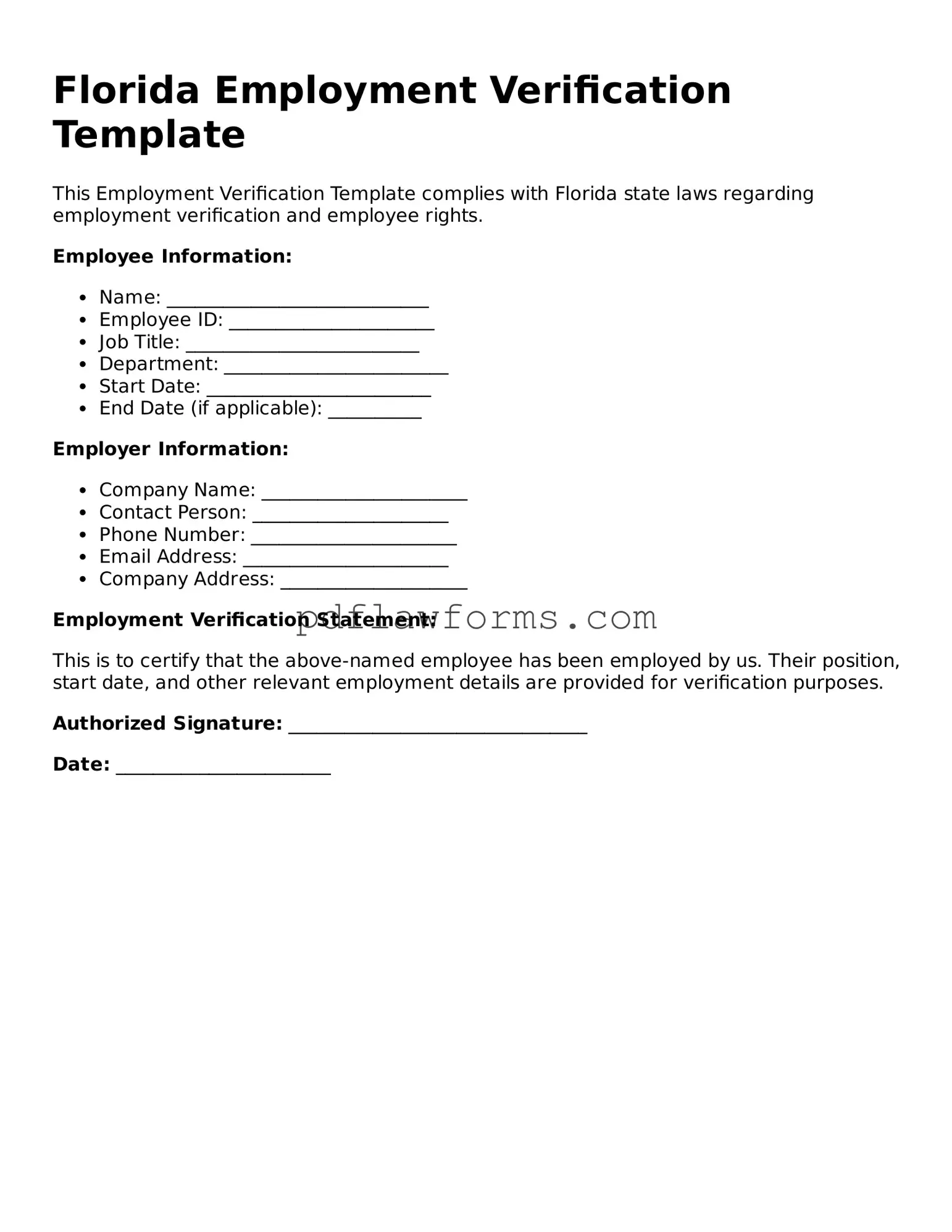In Florida, the Employment Verification form plays a crucial role in the hiring process, serving as a key document that employers use to confirm a candidate's work history and eligibility for employment. This form typically includes essential details such as the applicant's previous job titles, dates of employment, and reasons for leaving past positions. Employers rely on this information to assess a candidate's qualifications and fit for the job. Additionally, the form may require verification of the applicant's identity and eligibility to work in the United States, ensuring compliance with federal regulations. By providing a structured way to gather and verify employment information, the Employment Verification form not only streamlines the hiring process but also helps maintain workplace integrity. Understanding how to properly complete and utilize this form is vital for both employers and job seekers navigating the competitive job market in Florida.
